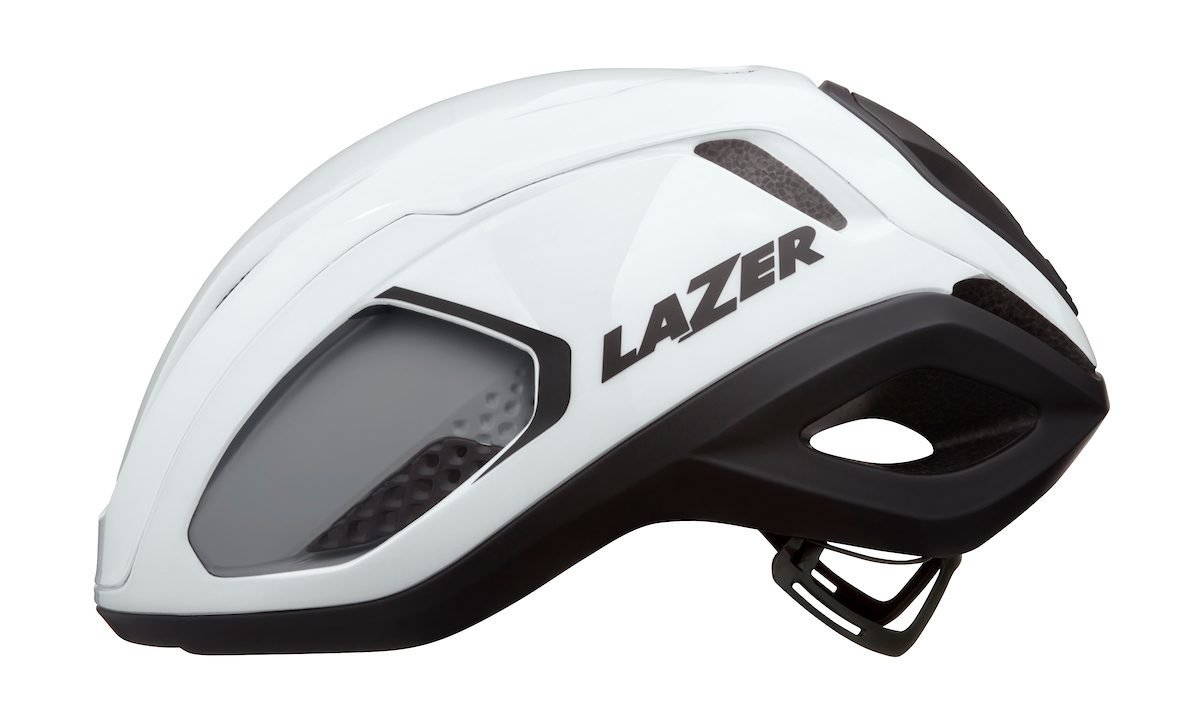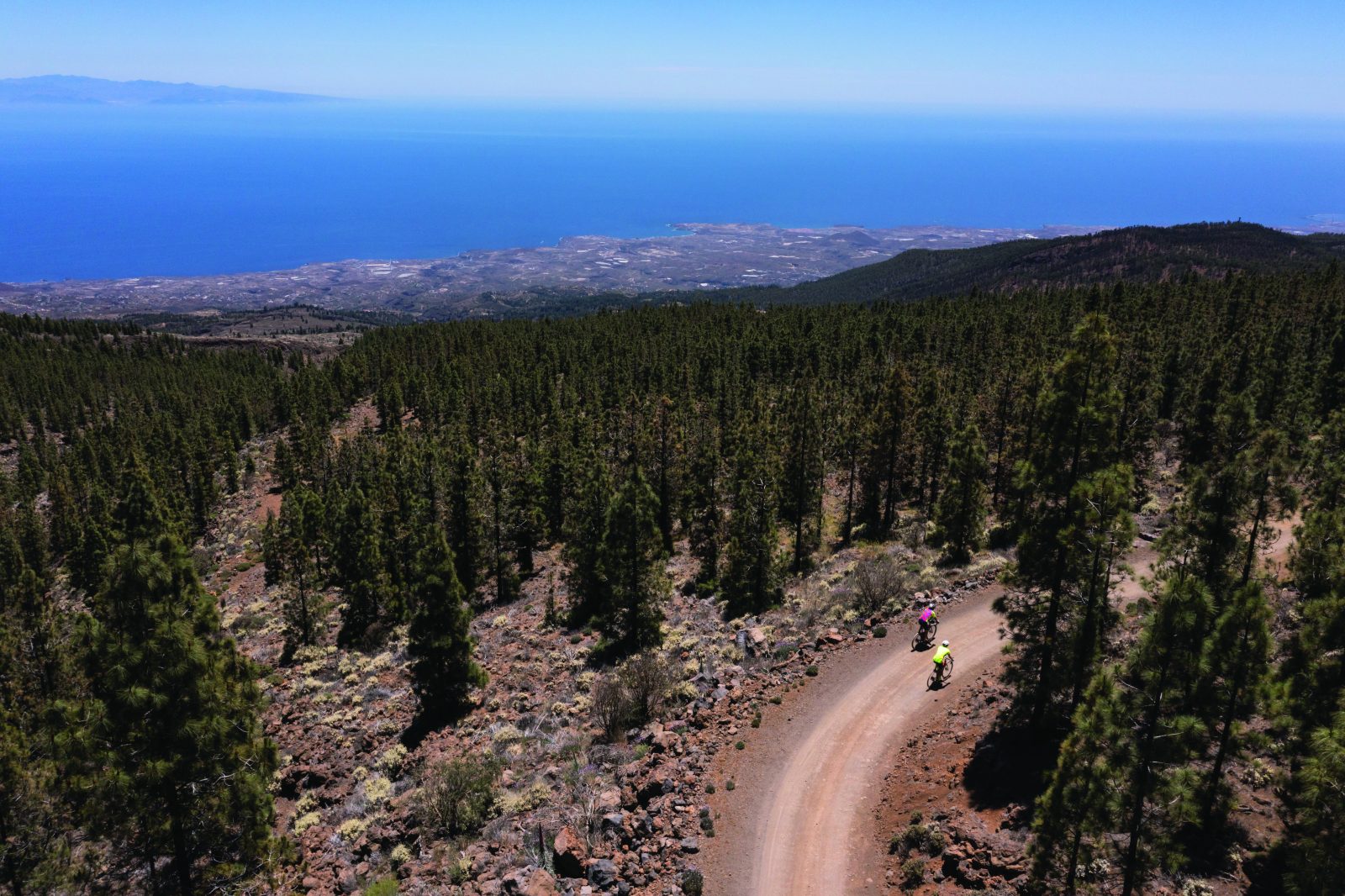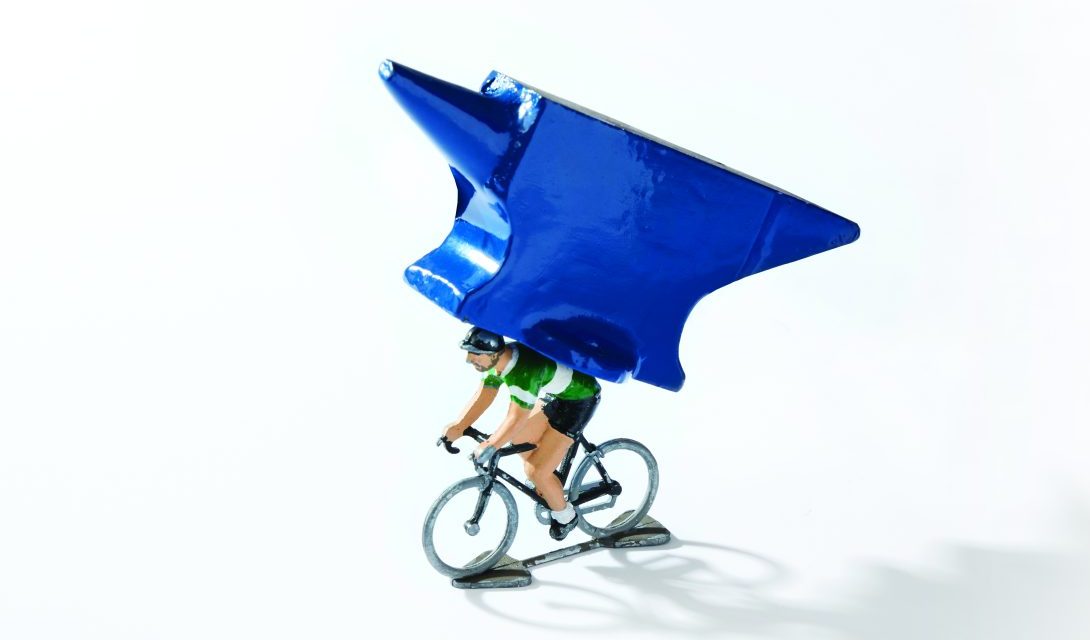If we believe what we are told, warming up and cooling down are as critical to cycling performance as the riding itself. Cyclist investigates what’s actually worth doing before and after the event
As the old saying goes, failure to prepare is preparing to fail. That’s why most riders have some form of pre and post-race regime, be it a half-remembered stretching routine, a frantic spin on a turbo or simply a few minutes in the car with the heater turned up to get a bit of warmth in the muscles. As with many things in cycling, though, the reasons we do such things can be unclear – based on habit, half-understood training advice or simply copying what the pros do on the telly.
In reality there are many sound reasons for taking the time to warm up for an event – both physically and mentally. But hold off for a moment before dragging your turbo out of the boot for a 20-minute ramp test ahead of riding a 100-mile sportive. What works for the pros may not only be unsuitable for the event you’re doing, it may actually hamper your performance.
‘Warming up should be part of a complete system of preparation,’ says Association of British Cycling Coaches (ABCC) senior coach Ian Goodhew. ‘Understanding what your body responds to, pre and post event, is all part of preparation, whether that’s the warm-up, nutrition or cool-down.’ Make sure your prep reflects the event that you’re entering.
‘The optimal warm-ups for track cycling, time-trials and sportives are going to be different in terms of what you want to achieve physiologically,’ says Chris Easton, senior lecturer in exercise physiology at the University of Edinburgh. ‘Generally, dynamic activity as opposed to static stretching is the way to go, which for cycling means spinning your legs at various intensities.’
Turning up the heat
‘Physiologically, there are a number of things going on when you warm up,’ says Easton. ‘Most of the beneficial effects come from temperature-related mechanisms in the body. When you increase the heat of a muscle you speed up the metabolic reactions, including the processes of energy metabolism. Increased temperature also helps to improve blood flow, dilating the blood vessels that feed the muscle. The mechanics of muscle contraction are optimal when the temperature of the muscle is higher as well.’
![]()

According to exercise physiologist and elite coach at RST Sport (rstsport.com) Xavier Disley, warming up not only reduces muscle stiffness and assists the release of oxygen from the blood, it also primes your body’s energy systems so that you hit the ground running (or pedalling). ‘Warming up can increase your baseline VO2 max,’ Disley says, ‘so at the start of a race you won’t be using anaerobic sources for energy but rather you’ll already be using your aerobic energy system.’
Warming up isn’t simply about the positive knock-on effects of getting heat into your muscles. Post-activation potentiation (PAP) refers to the phenomenon where significant pre-activation of muscles – the right kind
of warm-up, in other words – can increase the subsequent power and speed of muscle contractions. ‘PAP involves the body’s neuro-muscular activity,’ says Disley. ‘When your brain tells your body to make a pedal stroke it automatically activates those neural pathways that fire up the muscles required.’ Research has shown this prepping of the nerve conduction involved in cycling will help improve performance irrespective of what’s happening in the cells in terms of oxygen uptake, energy levels or just plain old aches and pains.
To complete the picture, warming up can be equally beneficial to the mind too. ‘People tend to focus on the physiological stuff and overlook the psychological aspect,’ says Disley. ‘Whatever the event, you need to get yourself ready to go and visualise what you’re going to be doing during the race. Part of the warm-up process is setting aside some time to think about it.’
Looking at the Sky
So those are the benefits, but how should you go about it? As usual it pays to look at what those men in black and blue are doing. ‘The evidence backing up Sky’s warm-up protocol is well founded,’ says Easton. ‘They’ll do five minutes of light cycling, an eight-minute ramp test [increasing power in steps every minute] going up to what they call zone 5, which takes the rider above their lactate threshold, then another couple of minutes light again.’ The secret weapon is adding three to six flat-out sprints lasting around six seconds each on the end to maximise PAP. ‘These maximal sprint efforts activate the muscles and processes required to perform at high intensities,’ says Easton. ‘One of the reasons this seems to work is that it causes an increase in the concentration of calcium ions in the muscle, which is really important for the muscle contraction process.’
Not only is this routine effective, it’s also short relative to the duration of a day-long race – about 20 minutes in total. ‘You don’t want the warm-up to be too long because it becomes counterproductive,’ says Easton. ‘It needs to be short enough that it doesn’t negatively affect performance. Getting too hot in advance can be bad for endurance sport as you can increase your substrate utilisation [use of stored energy].’

There’s no one-size-fits-all protocol with warm-ups, though. If you’re riding a time-trial or heading for the track, it pays to look at other strategies. ‘If a rider is going to be working at a high cadence they need a warm-up that reflects that,’ says Disley. ‘One I recommend starts with a 10-minute easy spin before gradually bringing the cadence up to 100rpm. Once they’ve hit that they’ll drop down to easy again for 60 seconds before bringing the cadence back up, this time to 110rpm. Another minute of easy then up to 120rpm, 130rpm, 140rpm and then to failure. After another 10 minutes easy pedalling they’re done, having prepped their neuro-muscular system and increased all those other factors related to warming up.’
It’s all very well emulating an outfit like Team Sky, but can the average cyclist really expect to see real benefits from following
the pro peloton’s lead?
‘You need to be realistic,’ says Goodhew. ‘Back in the day we followed Bernard Hinault’s book Road Racing: Technique And Training to the letter, but the trouble was we couldn’t ride the way he could – it was a totally different situation. Take what Sky are doing at the moment: their methods are fairly extreme and could be quite dangerous to Joe Public. If you’re doing a local 10-mile time-trial then riding up and down the road before the start might be enough of a warm-up, and for a seven-hour classic I’d debate whether you’d need a warm-up at all. For short distances you want to get straight into it, but for sportives you can warm up from the starting line.’
Disley agrees: ‘If you’re doing an eight-hour sportive and as long as you’re not planning to sprint off the line then a gentle spin to the start will be more than enough,’ he says. ‘Although if it’s a chilly early-morning start or you’re a bit cold you can do passive muscle temperature raising by just sitting in your car and ramping up the heating. It’s a viable performance-improving option.’
Cool runnings
Race done, you need to think about helping to return your body back to normal. ‘Warming up is about getting your body in the condition it needs to be during the event,’ says Goodhew. ‘So it stands to reason that recovery should be the reverse. Just getting off the bike and doing nothing is like letting your body drop off a cliff – a total body shock. What you’re looking to do is bring it down gradually with control.’
Unlike the pre-race preparation, though, what you do after an event seems to be more a personal preference than anything that’s based on any particular science.
‘Cooling down is a bit more sketchy in terms of what’s proven to work and what isn’t,’ says Easton. ‘You often hear about cooling down to remove lactic acid and reduce muscle pain and so on, but the research isn’t conclusive. Physiologically, you could flush out some of the waste products of energy metabolism, but that’s going to happen anyway regardless of whether you do some light spinning or absolutely nothing – it just might take a little bit longer.’
‘The science isn’t fantastic on the detail of what happens during a cool-down,’ says Easton. ‘But pro riders and coaches seem to favour some kind of light intensity cool-down, and we certainly shouldn’t be too dismissive of that because these are the guys who are out there doing it.’
As with warming up there’s a psychological benefit to taking the time to bring yourself back down to normal. ‘The second you finish an event the adrenaline
is buzzing and if you’ve not had a positive experience then not processing that isn’t going to be helpful moving forward,’ says Disley. ‘Cooling down gives you the time to go over the ride and look at what could be improved, although if you had a good result it also gives you the time to think about what an absolute legend you are!’
Ten to 15 minutes of easy spinning on a turbo or taking the long route back to the car is enough to bring your body and muscles down to a pre-ride temperature with control.
Heat tech
Whatever you’re doing to warm up and cool down, it should all be part of a preparation process that starts with being organised. ‘The most important thing is taking control of your preparation,’ says Disley, ‘If you can minimise the faff and make sure you know what’s happening it can significantly improve your performance. Making time for a planned warm-up is part of that preparation.’ That might mean taking a portable turbo trainer in the boot of the car, or factoring in time for a decent warm-up ride when you arrive.
Before you think about buying a WattBike for pre-event warming up though, remember that some events have noise restrictions, meaning you can’t use turbos in the car parks.
Once you’re warm, the trick is to stay that way, so taking some old clothes that can be discarded at the start line or even a bin bag can ensure the benefits of your warm-up aren’t lost – especially important in winter.
‘In the 2012 Olympics, Team GB’s track sprinters were wearing trousers with heating elements in them,’ says Disley. ‘They maintained the muscle temperature the athletes got from their warm-up over a longer period and the performance difference was unbelievable: a 10 per cent improvement in power output over a 30-second sprint.’
So plenty of dos but what about don’ts? Well it would seem those old deep lunges and calf stretches have had their day. ‘You don’t see many people doing it nowadays, but static stretching pre-event is definitely out,’ says Easton. ‘If you’re going to stretch do dynamic moves, but even they won’t be sufficient.’
Panicking that you’ve not taken on enough fuel and cramming energy drinks and gels into your mouth minutes before the start is a no-no, too. ‘Your body will react to it differently to when you’re on the bike,’ says Goodhew. ‘Instead, take on fuel while you’re warming up on the rollers or on the road so your body will retain even more glucose. Energy products are designed to help the body’s natural processes, but if you’re not careful they can hinder them. If you sit in the changing rooms and consume them, all they will do is produce insulin, which you really don’t want just before a race.’
The same goes for the kit that’s designed to enhance cooling down. ‘The evidence for a lot of these recovery strategies isn’t really that solid,’ says Easton. ‘Ice baths, compression socks and cooling sprays may work for some but really your body needs to do its own thing. Most of the negative things you get from exercise – muscle pain and so on – are a natural response to the effort you’ve put in and are actually beneficial for adaptation and improvement. Sometimes you don’t want to interfere with how the body is responding.’
Go through the motions
Our guide to getting up to speed and cooling things off
Before the off
‘During a warm-up, at some point you want to hit the effort required for the event,’ says Chris Easton. ‘Not for too long though, as you don’t want to fatigue before you get to the start. British Cycling recommends a great protocol that can be done in 20 minutes that not only warms up your muscles and raises your metabolic rate but also increases leg speed.’
This warm-up can be based on cadence, and although easier on a turbo it can also be done on a long, flat road. Start building up your cadence with five minutes of smooth pedalling at 90rpm. Up that by 5rpm every two minutes until you hit 110rpm. Do 30 seconds at 120-130rpm then drop back to 90rpm for two minutes. Next up are the maximal efforts: six seconds of 150+rpm before recovering for a minute at 90rpm. Do this three times, ending on two minutes recovery. Now you’re ready for anything.
After the flag
‘Once you’ve finished your event,’ says Ian Goodhew, ‘spin your legs in a very low gear at a high cadence for 10 minutes to get the blood pumping. Then when you get back to your car lie down with your feet higher than your head for another 10 minutes to get that oxygenated blood moving around the body.’
Get the tech
Turbo trainer
‘If you’re going to take a turbo trainer to an event, make it one you can use your race wheels on,’ says Xavier Disley. ‘I keep a fold-out turbo in my car, which
is ideal. It’s got very little resistance – you just put the front fork in a stand
and then you’re off.’
Compression socks
‘The evidence for compression socks aiding recovery isn’t solid,’ says Goodhew. ‘Any benefits may be due to muscle temperature. But if someone thinks it makes a difference to them I’m not going to argue.’
Ice bath
‘Inflammation is an important part of the muscle adaptation process and to reduce it [by using an ice bath] may adversly affect subsequent performance gains,’ says Chris Easton. If you want ice on the go, some compression tights
come with inbuilt ice packs.


